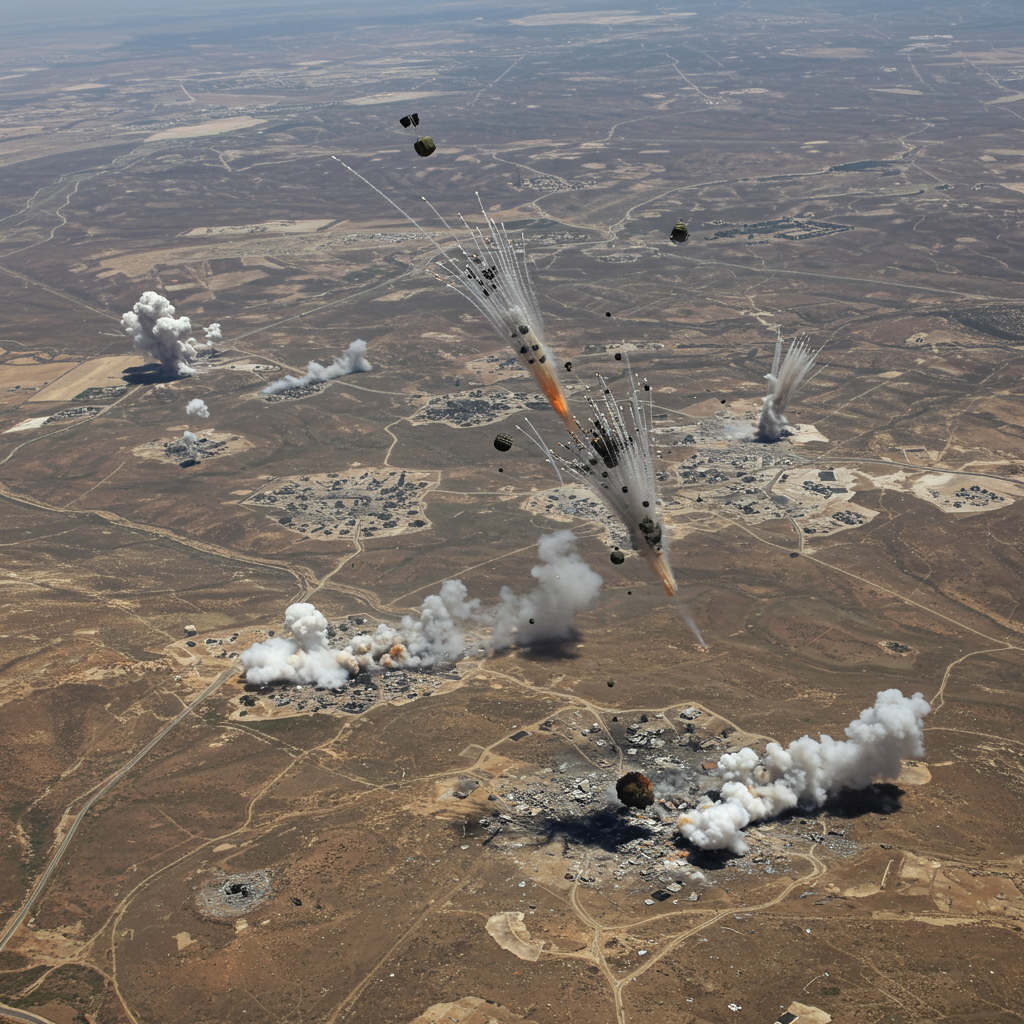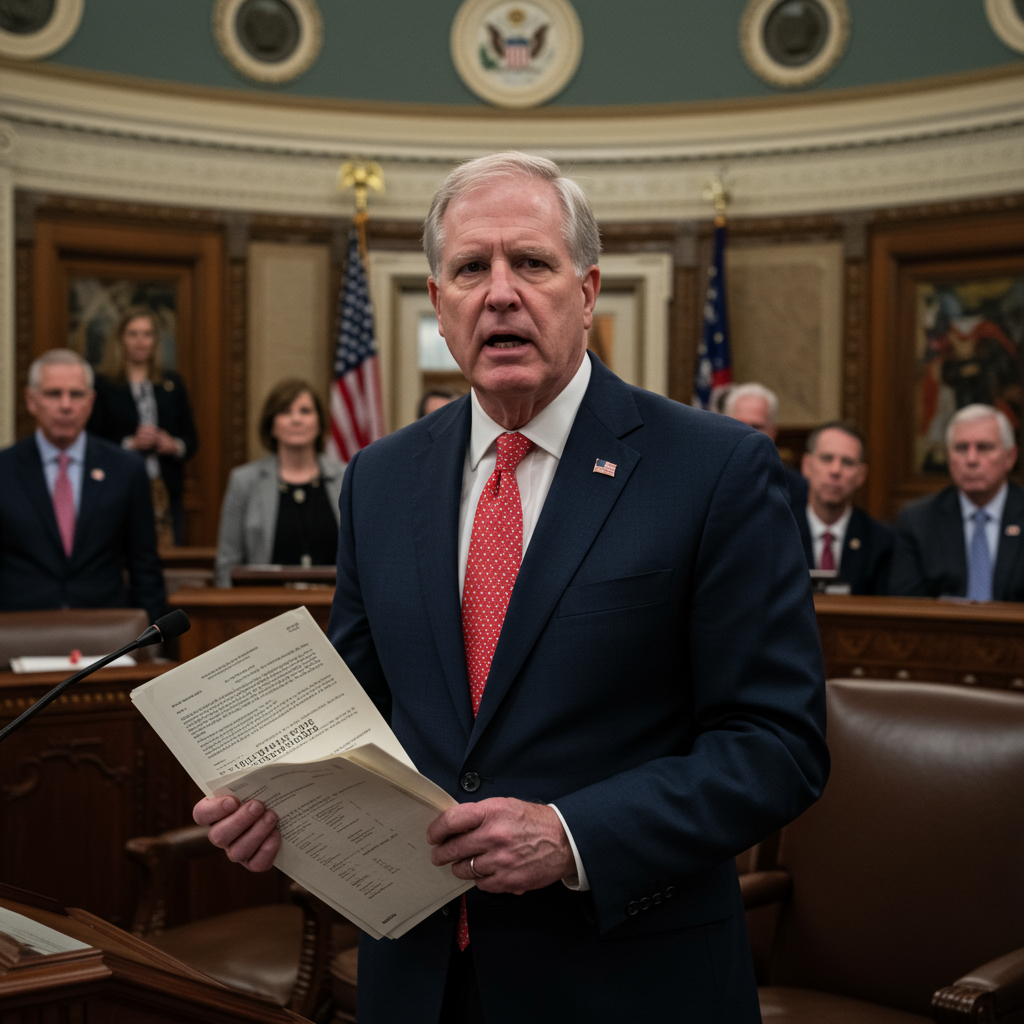Iran Fires Cluster Munitions as Israel Conflict Deepens
The direct conflict between Iran and Israel has reached a dangerous new phase on its eighth day, marked by Iran’s reported use of cluster munitions against Israeli territory. The Israeli military stated this was the first time such controversial weapons had been employed by Iran in the current escalation.
According to Israeli military accounts, at least one missile fired by Iran deployed its payload as it approached Israel. The warhead reportedly split open at an altitude of approximately 7 kilometers (4 miles), scattering around 20 smaller explosives, known as submunitions, over a radius of about 8 kilometers (5 miles) in central Israel. One of these submunitions struck a house in the central Israeli town of Azor, causing structural damage. While the incident caused damage, there were no immediate reports of casualties specifically from the bomb strike in Azor.
The Controversial Nature of Cluster Munitions
The use of cluster bombs immediately drew international condemnation due to their inherent risks. These weapons are designed to release numerous small bomblets over a wide area, making them inherently indiscriminate and posing a significant threat to civilians. A major concern is that a percentage of the submunitions often fail to detonate upon impact, leaving behind dangerous unexploded ordnance (UXO) that can kill or injure civilians long after active hostilities cease.
The Israeli military issued a public warning regarding the dangers of unexploded remnants potentially scattered by the Iranian attack. Brigadier General Effie Defrin, an Israeli military spokesperson, denounced Iran’s actions, characterizing the Iranian government as a “terror regime” that deliberately used weapons with wide dispersal capabilities “in order to maximize the scope of the damage” against civilian populations.
Daryl Kimball, Executive Director of the Arms Control Association, echoed these concerns, describing cluster munitions as “egregious weapons,” particularly when used in civilian populated areas. He added that given the known imprecision of Iranian missiles, Tehran should anticipate that such weapons would likely strike civilian rather than military targets.
It is notable that neither Iran nor Israel are among the signatories of the 2008 international Convention on Cluster Munitions, a treaty banning the production, stockpiling, transfer, and use of these weapons. The United States, Ukraine, and Russia are also not parties to this convention, though the US controversially supplied cluster munitions to Ukraine for use against Russian forces in 2023.
Beyond Cluster Munitions: A War of Escalation
The reported cluster munition attack occurs amidst a rapidly escalating direct military confrontation that began after Israel launched ‘Operation Rising Lion’ on June 13th, initially targeting Iran’s nuclear and military infrastructure. The conflict has quickly evolved into a dangerous exchange of strikes across both countries.
Israel has conducted extensive air strikes using dozens of fighter jets, hitting numerous military targets in Iran. These attacks have targeted missile production facilities, military compounds, and critical components of Iran’s nuclear program, including the SPND headquarters (Organisation for Defensive Innovation and Research) in Tehran, the Arak heavy water reactor, and the uranium enrichment facility in Natanz. Israeli officials have stated their goal is to dismantle Iran’s nuclear capabilities and have reportedly targeted Iranian military leadership and scientists. The rhetoric has also intensified, with Israeli Defence Minister Israel Katz referring to Supreme Leader Ayatollah Ali Khamenei as the “modern Hitler” who must not be allowed to continue, and Prime Minister Benjamin Netanyahu vowing a “heavy price” for Iranian attacks.
Iran has retaliated with missile and drone strikes targeting various locations in Israel. While claiming some strikes aimed at military bases, Iranian missiles have also hit civilian or sensitive infrastructure. Notable Iranian targets have included the Weizmann Institute of Science near Tel Aviv, causing significant damage to research laboratories, and the Soroka Medical Centre in Beersheba, which suffered extensive damage and injuries, though Tehran claimed the hospital itself was not the primary target. Residential buildings in Tel Aviv have also been impacted.
The Human Toll and International Concern
The conflict has resulted in a mounting human cost on both sides. Casualty figures vary depending on the source, highlighting the difficulty of verification in ongoing hostilities. Iran’s Health Ministry has reported over 220 deaths, with its ambassador to Russia citing closer to 300, including military personnel, scientists, and civilians. Israel has reported over 20 deaths and hundreds injured since the start of the war.
The violence has created widespread disruption across the Middle East. Air travel has been significantly impacted, and countries have begun evacuating their nationals and closing embassies, with Australia notably ordering its officials to leave Tehran. Concerns are also high for the safety of foreign nationals working in sensitive locations, such as Russian personnel at Iran’s Bushehr nuclear power plant.
Diplomatic Impasse and Global Power Play
International diplomatic efforts are underway to de-escalate the crisis, including engagement between European diplomats and Iran’s Foreign Minister Abbas Araghchi and emergency sessions of the UN Security Council. However, a breakthrough remains elusive, with Iran reportedly refusing direct negotiations with the United States as long as Israeli attacks continue.
The United States is closely monitoring the conflict, with President Donald Trump expected to decide on potential US involvement soon, reiterating that preventing Iran from acquiring a nuclear weapon is a top priority. The US military has taken precautionary measures, relocating some aircraft from regional bases.
Russia has taken a strong stance, condemning Israeli strikes on Iranian nuclear infrastructure as illegal and warning they risk a global crisis, potentially even a “nuclear catastrophe.” Moscow has urged Israel to immediately cease its attacks and warned the United States against military intervention, stating it would lead to “unpredictable and dangerous consequences,” while also offering to mediate between the two sides.
The conflict also highlights internal dynamics within Iran, particularly for Supreme Leader Ayatollah Ali Khamenei, whose power is closely tied to the Islamic Revolutionary Guard Corps (IRGC). The recent appointment of a new head of IRGC intelligence follows the killing of his predecessor and other commanders in an Israeli strike, indicating the pressure on the Iranian leadership structure amidst the conflict.
The reported use of cluster munitions by Iran represents a significant and concerning escalation in its direct confrontation with Israel. As the war enters its second week with mounting casualties, intensifying strikes, and a lack of diplomatic progress, the involvement of major global powers underscores the high-stakes and volatile nature of the situation, raising international alarm over the potential for the conflict to widen.



